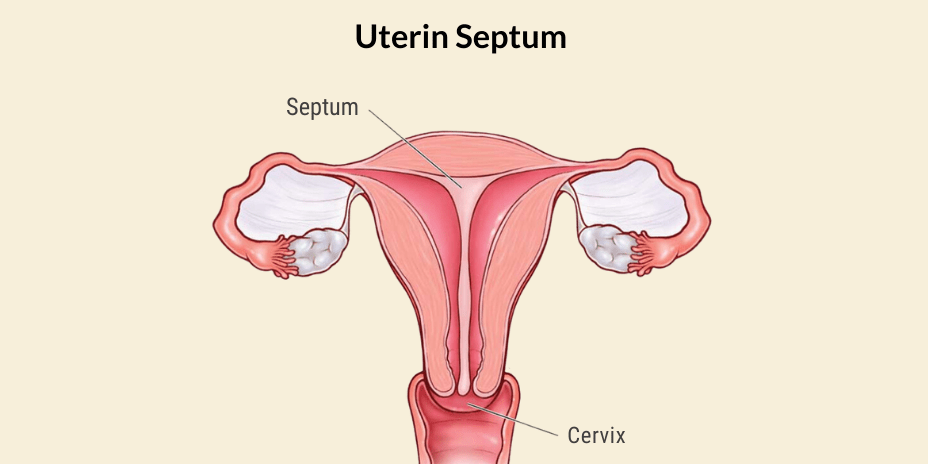
UTERINE SEPTUM
Uterine septum is the most common uterine congenital anomaly. A condition is said to be a congenital anomaly when it affects a person from birth. In this condition extra tissue called the septum hangs in the uterus from the top. The septum is often shaped like a wedge and maybe small or may hang from the top to the cervix (mouth of the uterus) , thereby dividing the uterus into two cavities.
The extra tissue which is formed is unlike the tissue which makes up the rest of the uterus this is because it has poor blood circulation. Hence, a fertilized egg (embryo) can’t implant itself in the uterus and even if it does manage to it may fail to develop further. Therefore, uterine septum can lead to infertility.
CAUSES
Since uterine septum is a congenital anomaly women affected by it are born with it. It is developed It happens due to the failure to absorb the dividing interior wall by the two uteri which fuse together.
SYMPTOMS
Uterine septum shows no symptoms, except infertility. Most women affected by uterine septum discover they have it, when trying to understand the reason behind their infertility.
DIAGNOSES
Various imaging techniques may be used in order to ascertain uterine septum:
TRANSVAGINAL ULTRASOUND :
Ultrasound is an imaging technique which uses ultrasound waves to create an image/video of the internal organs of the patient. In transvaginal ultrasound, the doctor will insert the transducer into the patient’s vagina in order to inspect the uterus with the help of the video/image on screen.
HSG :
The doctor may recommend sonohysterosalpingography. It is a procedure similar to ultrasound but in this procedure the surgeon also inserts a saline solution into the cavity of the uterus, this helps the doctor to see things which would not be possible with normal ultrasound.
HYSTEROSCOPY :
Hysteroscopy is a procedure in which the doctor inserts a small, lighted instrument known as the hysteroscope through the patient’s natural orifices. This instrument relays images on the screen, which helps the doctor to inspect the inner organs of the patient and remove the polyps.
MRI :
Magnetic Resonance Imaging (MRI) is a technique used to produce an image of the internal organs, this is done with the help of a magnetic field and pulses of radio waves.
TREATMENT
HYSTEROSCOPIC RESECTION :
Septum resection is performed with hysteroscopy. Hysteroscopy is an outpatient procedure in which the doctor inserts a small and lighted instrument called the hysteroscope into the patient’s vaginal opening. This instrument relays video to a monitor, where the doctor can inspect the organs in the pelvic area. A liquid is pumped gently so that the doctor can examine organs clearly. The doctor passes the surgical instrument along with the hysteroscope. The septum is resected, thus increasing the area where the fertilized egg can implant itself.
